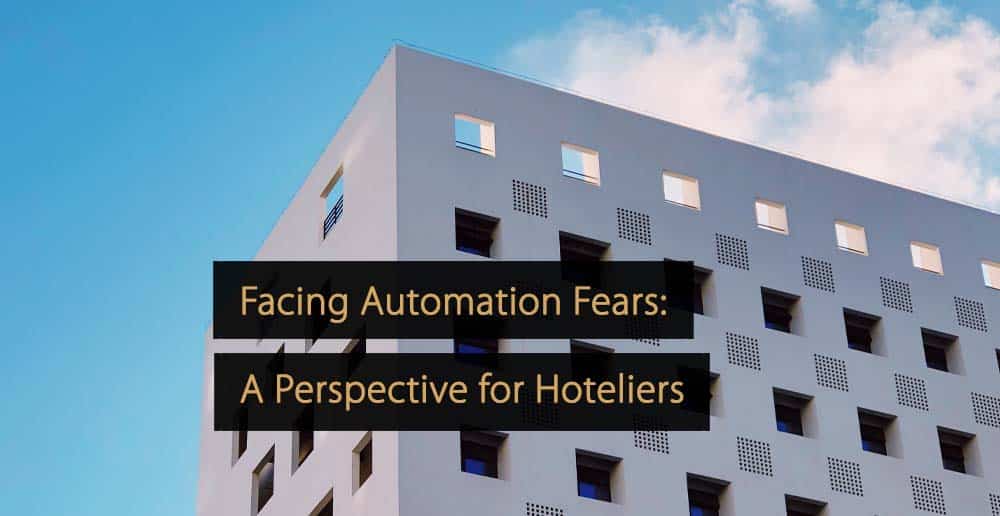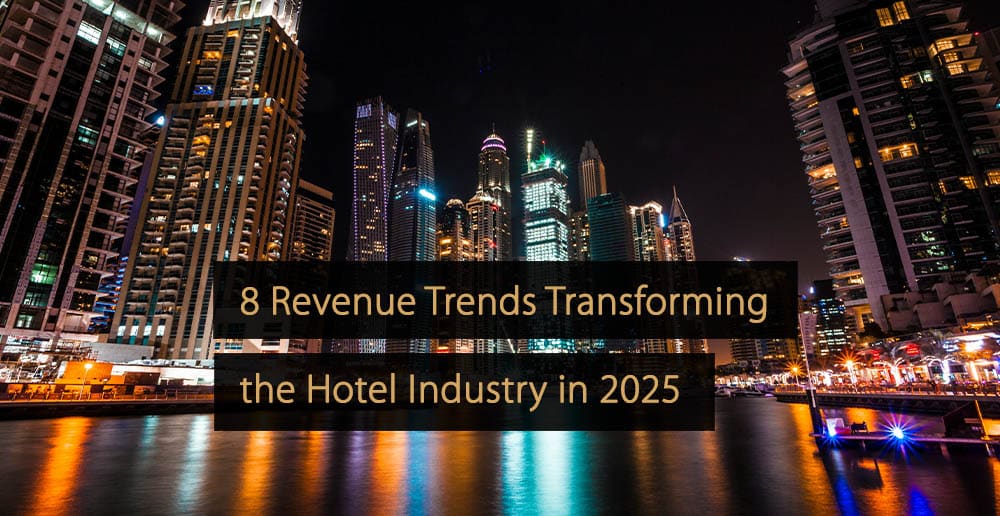For some, advancements in automation bring a profound sense of dread. Worrying about the big-picture societal challenges that may come with the widespread adoption of new, advanced generative AI tools is understandable. But instead of fretting about whatever dystopian worst-case scenario automation may bring, it’s time to take a step back for perspective and think of how automation may apply to revenue management.
Living in the Age of Automation
We are already deeply entrenched in an automated society. Over the years, software-as-a-service (SaaS) providers have rigorously refined their products’ automation features to enhance the user experience. This is evident in mobile apps and the development of user-friendly management dashboards.
We have grown dependent on automation, and regardless of our philosophical standpoints, it is integrated into our daily lives. Consider how many rely on ride-share services for transportation, use apps for delivery, or purchase widgets from across the globe with the click of a button. These have become so commonplace it is hard to imagine a time when they didn’t exist.
Given this, it might be the right moment to reevaluate automation’s role in the hospitality sector.
Trusting Automation
Over the last decade, cloud computing power has quietly revolutionized our day-to-day experiences. For hoteliers deciding on a revenue management system (RMS), some yearn for hands-on control, especially if they’ve never leveraged automation in pricing. There is also the apprehension that the system might overshadow their decision-making. No matter the specific worry, addressing these misconceptions is crucial.
While we’ve embraced automation in certain aspects of our lives, we remain hesitant in some areas. Take the comparison between smart cars and autonomous vehicles. Many are understandably wary of fully autonomous vehicles taking the reins. This hesitation often boils down to trusting a machine with your safety. However, it is crucial to distinguish between a smart car and a self-driving one.
Smart cars today have features such as adaptive cruise control, blind-spot indicators, and rearview cameras. These technologies guide us, helping in informed decision-making. Yet, they still necessitate human intervention. Essentially, while smart cars provide alerts about potential dangers, they aren’t autonomously navigating without human oversight.
Drawing parallels to revenue management, an RMS isn’t the self-driving car, nor does it aspire to be. While some revenue managers prefer to retain control over the system for comfort, they might not grasp the analytical implications. Cherry-picking functionalities in a self-evolving system hinder its ability to discern its decisions’ efficacy.
Automation vs Spreadsheets: Which Raises More Eyebrows?
If you were to look “under the hood” of an advanced RMS, you’d realize that a self-learning mechanism underpins it. This mechanism autonomously makes decisions, implements them, and then observes the results. Using this feedback, it recalibrates and takes new actions—all of this is powered by numerous computations and algorithms.
Contrastingly, an RMS devoid of this self-learning ability can’t effectively adapt to its surroundings. Instead, such systems, which are more decision-supportive in nature, hinge on rule-based strategies for dynamic pricing. Their effectiveness is tethered to the capabilities of the user setting them up and the effectiveness of their set rules. As market dynamics shift and personnel change, keeping such systems updated and performing well can become a substantial challenge.
While decision support offers valuable analytics for occasional strategic choices, many on-the-fly decisions are needed every minute of the day. How can a lone individual—or even a team—effectively cope with this sheer volume without the smart application of automation?
Some systems necessitate manual confirmation of rate alterations. Even if set to autopilot, they need human intervention. The computational prowess of humans pales in comparison to an RMS. Expecting revenue managers to consistently oversee and adjust rates at the scale necessary for optimization is unrealistic. After scrutinizing, they often concur with the system’s suggested rates, rendering the manual review redundant and causing unnecessary delays.
That doesn’t mean a revenue manager is wholly redundant with an automated RMS. In an optimal scenario, an advanced RMS should autonomously make pricing decisions for the vast majority—say, 90% of the days monitored. The revenue manager can then concentrate on the 10% that genuinely need the attention—the busy outlier days with holidays, large concerts, and other significant market-shifting events that present ample opportunities for revenue growth.
Entrusting the automated system with data analysis liberates the revenue manager to strategize on maximizing profits through distribution.
Trust the Process, Trust the Outcome
A common fallacy is expecting analytics to mirror human thought processes. While humans might be influenced by extrinsic factors like fuel prices or competitor actions, analytics isn’t necessarily privy to such nuances.
For instance, you can’t have the analytics system read the newspaper and then decide to incorporate changes based on the assumed impact of reported macroeconomic trends. Instead, analytics can pick up a trend and adjust outputs without necessarily knowing the real-world scenario that caused it. In contrast, humans do the reverse process, see a real-world scenario, and change their assumptions based on the new knowledge.
Self-learning revenue management systems automatically create new data points to calibrate. For example, recalibrating booking curves every couple of weeks as new trends and patterns occur or recalculating price sensitivity every couple of weeks by determining when guests are willing to pay more or less than they were in the previous period.
With many revenue management and pricing solutions vying for attention, the distinction boils down to rule-centric, decision-support tools versus analytics-driven, decision-management solutions that effortlessly churn out decisive actions encompassing pricing, rate availability, and more.
Given the current market’s unpredictability, the prowess of self-learning systems is paramount. However, this doesn’t render human roles obsolete. Trusting the system means trusting its outcomes based on the information fed into it.
Automation is a term that sends chills down some spines, but the reality is that an automated RMS is far from a horror story for revenue managers and hoteliers alike. Savvy, innovative hoteliers are investing in a computerized, decision-making RMS that will empower their hotels by enhancing revenue with greater efficiency, long-term stability, and exponential growth.
Free Guide: The Ultimate RM Buyer’s Guide
More Tips to Grow Your Business
Revfine.com is the leading knowledge platform for the hospitality and travel industry. Professionals use our insights, strategies, and actionable tips to get inspired, optimize revenue, innovate processes, and improve customer experience.Explore expert advice on management, marketing, revenue management, operations, software, and technology in our dedicated Hotel, Hospitality, and Travel & Tourism categories.








Leave A Comment